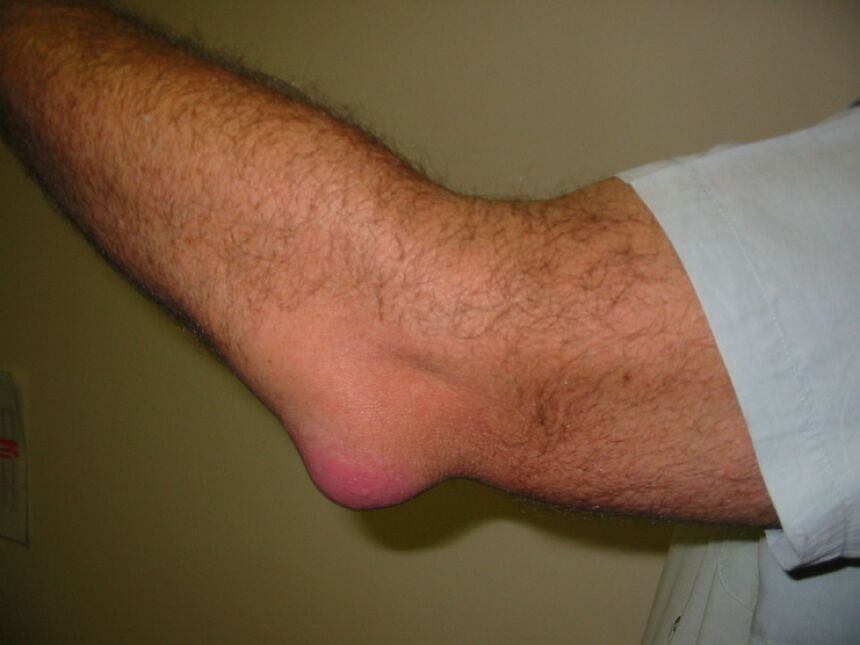What is a Bursa?
Bursae (plural) are thin closed fluid-filled sacs that function to provide a gliding surface to reduce friction between bone and the surrounding soft tissue structures hence, they are commonly found around joints. They are lined with a synovial membrane and normally filled with a sliver of fluid.
Bursitis is inflammation of a bursa characterised by thickening of the synovial lining and accumulation of excess fluid.
What is olecranon bursitis?

Olecranon bursitis is a condition that occurs when the fluid-filled sac over the bony prominence of the tip of your elbow, the olecranon bursa, becomes inflamed. The inflammation can cause pain and swell along the underside of your elbow that may be accompanied by limited movement or stiffness.
Olecranon bursitis usually affects people who are over 40 years old but can also affect younger adults, in particular, individuals who have a tendency to lean on their elbows, which is why it is also referred to as "student's elbow".
What causes olecranon bursitis?
- Overuse - This includes repetitive use of the arm in activities such as throwing, lifting heavy objects, playing sports, etc.
- Injury - A direct hit to the area from a blow or a fall can lead to an acute case of olecranon bursitis.
- Recurrence - If you have had bursitis before it can reoccur in the same area, sometimes without an obvious trigger.
- Infection - As we have a tendency to lean on our elbows it is possible for a small sharp object to break the skin and introduce infection causing a septic bursitis.
If you think you might have an infected bursa, you should arrange to see a doctor urgently.
What are the symptoms of olecranon bursitis?
Symptoms of acute olecranon bursitis include tenderness at the site of the bursa, redness, warmth, swelling, and loss of range of motion. Worsening pain, spreading redness, feeling fatigued and generally unwell should raise the suspicion of septic bursitis.
Chronic olecranon bursitis can be a painless swelling of the bursa. Even after the swelling settles you may still feel nodules or crepitus over the area.
Diagnosing olecranon bursitis
The diagnosis of olecranon bursitis is fairly obvious from the history and physical examination. An in-clinic ultrasound scan can be used to confirm the diagnosis.
X-rays may be ordered if there is suspicion of a broken bone or a foreign body in the soft tissue. In addition, blood tests may be performed to rule out infection or an inflammatory condition.
Treatment of olecranon bursitis
Acute cases of olecranon bursitis will typically resolve within 2 weeks. However, chronic cases often require longer periods of time to heal.
Treatment options vary depending upon the severity of the symptoms:
- Most patients respond well to conservative treatments including rest, ice packs, anti-inflammatory medications, avoiding direct pressure and using elbow pads.
- Fluid removal (aspirating) and steroid injection administered under ultrasound guidance are routinely done for appropriate cases.
- If an infected bursa is suspected this must be urgently attended to and treated, usually with antibiotic medication. Removal of fluid can help identify if any bacteria are present.
- Surgery is rarely needed unless the patient has failed non-operative management.
If you develop a swelling, painless or not, you should get it seen by a medical physician. Click here to make an appointment.
